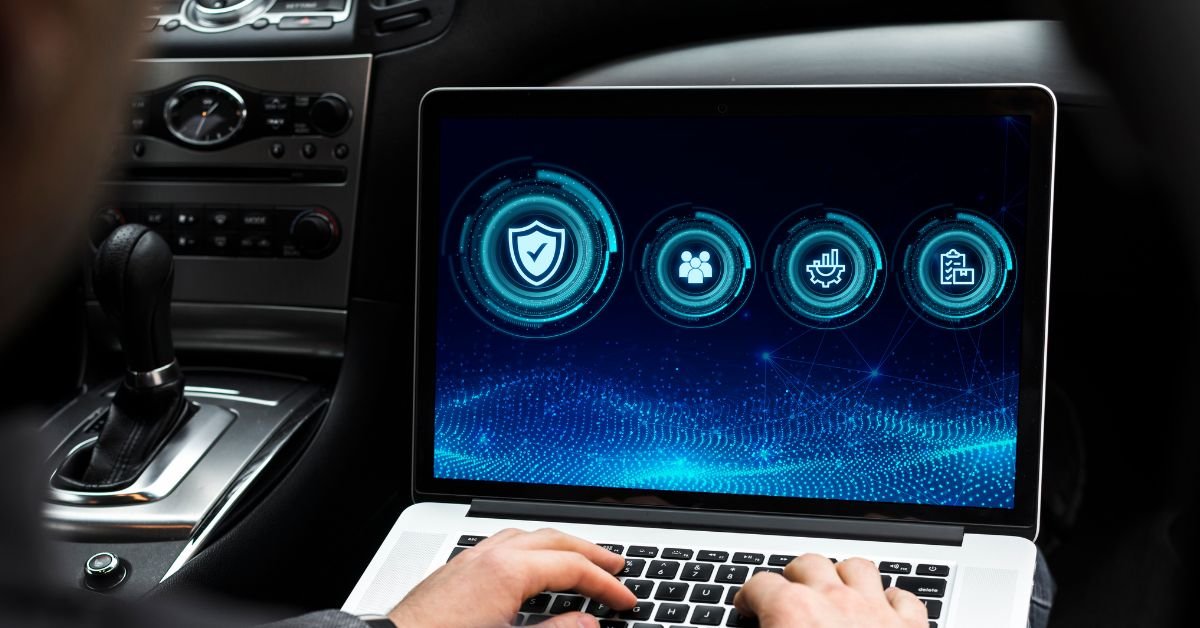BUSINESS
Drive Secure: The Smart Guide to Auto Insurance

Drive Secure: The Smart Guide to Auto Insurance
When you dive into Drive Secure: The Smart Guide to Auto Insurance, you’re exploring more than just premium comparison or liability limits—you’re tapping into a comprehensive resource packed with industry best practices, telematics innovations, and strategic savings opportunities. This guide offers clarity around collision coverage, personal injury protection (PIP), uninsured motorist policies, and how a savvy policyholder can navigate deductible decisions while maximizing discounts from safe‑driving programs like GEICO DriveEasy or Progressive Snapshot.
Understanding Basic Coverage Types
Liability Insurance: Your Foundation
Every policy starts with liability insurance. This essential protection helps cover bodily injury and property damage when you’re at fault in an accident. Whether you’re considering 25/50/25 state minimums or boosting to 50/100/50 or beyond, the purpose is consistent: safeguarding your assets against potential financial loss.
Collision vs. Comprehensive Coverage
While liability covers others, collision coverage pays for repairs to your own vehicle after an accident, no matter who’s at fault. On the other hand, comprehensive insurance protects against non‑collision events—such as theft, vandalism, fire, or weather damage—ensuring peace of mind when calamity strikes.
Personal Injury Protection (PIP) in No‑Fault States
In no‑fault jurisdictions, Personal Injury Protection steps in to cover medical expenses for you and your passengers, regardless of fault. It often includes lost wages and some rehab services. If you live in a state requiring PIP, it’s a fundamental component of a secure auto insurance plan.
Uninsured and Underinsured Motorist Coverage
Even the most cautious driver can be exposed when others on the road lack adequate insurance. That’s why uninsured/underinsured motorist coverage is essential—it protects you from being stuck paying out of pocket following an accident with an under‑insured driver.
How Deductibles and Policy Limits Shape Your Coverage
Choosing the Right Deductible
A higher deductible—typically $1,000 or more—lowers monthly premiums but increases what you pay upfront after a claim. Lower deductibles (e.g., $250–$500) offer more comfort in accident situations but carry higher ongoing costs. Understanding your risk tolerance and emergency fund is key in striking the right balance.
The Importance of Adequate Policy Limits
Policy limits define the maximum your insurer will pay. Standard formats like “25/50/25” refer to $25,000 per person bodily injury, $50,000 per accident bodily injury, and $25,000 property damage. Increasing limits (e.g., 50/100/50 or higher) safeguards against serious accidents that could result in medical bills or property damage well beyond base thresholds.
Smart Saving Strategies and Telematics Programs
Safe‑Driving Programs
Insurers such as GEICO, State Farm, Progressive, and Nationwide offer telematics-based initiatives—like DriveEasy, Drive Safe & Save, and Snapshot—to monitor driver behavior through smartphone apps or plug-in devices. Good work with braking, acceleration, and mileage tracking often yields premium discounts between 10–30%.
Bundling and Loyalty Rewards
Bundling auto insurance with homeowners or renters coverage lowers costs and simplifies middleware like policyholder tools and mobile claims apps. Also, loyalty programs often reward drivers without major claims or traffic violations.
Discounts You Shouldn’t Overlook
From good-student discounts and teen-driver safe courses to installing anti‑theft devices and low-mileage incentives, insurers offer a laundry list of savings paths. Staying educated about offerings from each carrier—such as AAA, Allstate, or Lemonade—can significantly reduce your premium.
Insurance Quote Comparison: A Strategic Approach
Gathering Multiple Quotes
Comprehensive policy comparison means more than price checking—it involves evaluating coverage depth, exclusions, and financial stability of the insurance provider. Gathering quotes from a mix of national carriers, state-specific providers, and online-only companies helps highlight differences in coverage, deductible options, and included services.
Reviewing Your Policy Every Year
Auto insurance needs change. Selling a vehicle, hiring a new driver in the household, or moving to a new ZIP code can impact risk profiles and premiums. Annual policy reviews ensure your protection remains optimal without overpaying.
Understanding an Insurance Declaration Page
The policy declaration page—the “dec page”—summarizes coverages, deductibles, limits, and endorsements. Knowing how to read it ensures you’re fully aware of what’s included (or excluded) from your policy.
Customer Service and Claim Handling
The Role of the Underwriter
Underwriters evaluate your risk profile at policy inception—analyzing factors like driving history, age, vehicle type, and credit score (in certain jurisdictions). Their decisions influence rates and available coverage.
Navigating the Claims Process
A seamless claims experience starts with accessible reporting tools—like smartphone apps or toll‑free hotlines. Once the claim’s registered, insurers may refer you to adjusters or partner shops for damage assessment. Quality carriers—such as USAA or Amica—earn high satisfaction ratings for easy claim processing and repair coordination.
Who’s Involved in a Claim?
-
Policyholder: You—the insured individual.
-
Insurer: The company that underwrites your policy.
-
Claimant: The party making a claim (you or someone else involved in an accident).
Regional and Regulatory Considerations
State-Mandated Minimum Requirements
Laws vary by location. In no-fault states, PIP is mandatory. In others, uninsured motorist insurance may be optional but strongly recommended. Today’s smart guide helps drivers confirm minimums for their region—like 25/50/25 liability or higher requirements.
No-Fault vs. At-Fault States
In no-fault systems, claims are filed through your insurer regardless of who caused the crash, avoiding direct lawsuits unless damages exceed a threshold. At-fault or tort states allow you to sue the at-fault driver for losses—an important distinction affecting policy structure.
Understanding Telemetry and Privacy
Telematics programs offer savings but can collect driving data, including speed, timing, and location. Reading privacy disclosures helps drivers decide how much data they’re comfortable sharing in exchange for potential discounts.
Empowering the Policyholder
Using Online Policyholder Tools
Modern insurers provide robust digital ecosystems—mobile apps, online account dashboards, and automated billing. Use these tools to monitor mileage, adjust coverage, download ID cards, and file claims efficiently.
Endorsements and Riders
Need rental reimbursement? A rideshare add-on for Uber or Lyft? Look to endorsements—policy enhancements that sit atop your standard package. Add-ons allow tailored coverage without overhauling your base policy.
Educating Yourself: Terms to Know
-
Premium: Your periodic payment.
-
Deductible: Your out‑of‑pocket contribution after a claim.
-
Policy Limit: Maximum payout.
-
Exclusion: What is not covered.
-
Endorsement: Optional add-on coverage.
Frequently Asked Questions (FAQs)
1. What’s the difference between liability, collision, and comprehensive coverage?
Liability covers harm to others, collision covers damage to your car from crashes, and comprehensive protects against non‑collision events like theft and weather damage.
2. Do safe-driving apps really save money?
Yes—programs like GEICO DriveEasy and Progressive Snapshot can reduce premiums up to 30% by rewarding consistent, safe driving.
3. What deductible amount should I choose?
Choose a deductible based on your financial cushion—a higher deductible lowers your monthly cost, but means more out-of-pocket if you file a claim.
4. Is uninsured motorist coverage necessary?
Highly recommended. If an at-fault driver lacks insurance or is under-insured, this coverage helps you avoid paying out-of-pocket for injuries or damage.
5. Can I adjust my policy after enrolling in a telematics program?
Certainly—adjusting liability limits, adding riders like roadside assistance, or increasing your deductible is possible. Just confirm with your insurer how changes affect telematics savings and renewal terms.
6. Should I bundle my auto and home insurance?
Yes, bundling typically yields multi-policy discounts, simplifies billing, and keeps all documents in one provider’s ecosystem.
Conclusion
Drive Secure: The Smart Guide to Auto Insurance empowers you to build a policy that balances protection, affordability, and convenience. You’ve learned about key coverages—liability, collision, comprehensive, PIP, and uninsured motorist—as well as how deductibles, limits, and endorsements customize your plan.

BUSINESS
How to Check Adopt Me Value for Every Pet Trade

Trading in Adopt Me value isn’t just a side feature—it’s the backbone of the game’s community. With millions of daily players and hundreds of unique pets, items, and vehicles, an unofficial economy has formed.
Understanding adopt me trading values helps you:
- Avoid unfair trades and scams
- Track the rise and fall of popular pets
- Make smart choices when trading legendaries or event exclusives
- Stay updated as new pets are released and older ones become rarer
One player recently shared: “I traded my Arctic Reindeer for a Frost Fury back in 2021, and now it feels like one of the best deals I ever made. Values change fast—you’ve got to keep learning.”
Adopt Me Pet Values: The Core of the Trading System
Every pet has a different place in the game’s economy. Some are common and easy to get, while others are rare or even discontinued. Knowing adopt me pet values is essential before you click that trade button.
- Common pets: Starter eggs, frequent hatches. Worth low-value items.
- Uncommon pets: Slightly rarer, often from basic eggs.
- Rare pets: Harder to hatch, usually worth uncommon combos.
- Ultra-Rare pets: Limited release or event pets with higher demand.
- Legendary pets: The crown jewels of Adopt Me trading.
The trick? Value isn’t just about rarity—it’s also about demand. A pet could be rare but unwanted, or common but surprisingly popular.
Adopt Me Trading Values Explained
When people talk about adopt me trading values, they’re usually comparing one pet’s worth against another. A trade’s fairness depends on three things:
- Rarity – Shown in the game by color tiers.
- Demand – How many players want it.
- Availability – Whether it’s still obtainable or discontinued.
Think of it like a stock market—only instead of shares, you’re dealing with unicorns, owls, and shadow dragons.
Adopt Me Value List: Your 2025 Reference
A reliable adopt me value list is like a trading bible. These lists are updated by communities and fans, and while not official, they reflect real market trends.
Sample Value List (2025 snapshot):
| Pet | Rarity | Current Value | Notes |
|---|---|---|---|
| Shadow Dragon | Legendary | Extremely High | Discontinued, top-tier trade |
| Frost Dragon | Legendary | Very High | Winter exclusive, rising demand |
| Neon Unicorn | Legendary | High | Popular but still available |
| Arctic Reindeer | Legendary | High | Limited holiday pet |
| Blue Dog | Rare | Medium-High | One of the first pets, nostalgic value |
| Neon Cat | Common | Low-Medium | Easy to hatch, but neon boosts demand |
Players often bookmark multiple adopt me worth lists to compare. No single list is perfect, but combining sources keeps you on track.
Roblox Adopt Me Pets Worth: How to Judge Fairly
It’s easy to overvalue your favorite pet. Maybe you’ve raised it since it was a newborn, or you finally made it neon after weeks of grinding. But the real roblox adopt me pets worth comes down to the community’s perception.
Here’s how to gauge worth:
- Check multiple lists – Don’t rely on one site.
- Look at trading servers – Demand is clear in real-time.
- Track event pets – Anything from seasonal eggs gains value once it leaves.
Adopt Me Legendary Pets: The Hot Market
If there’s one category everyone watches, it’s adopt me legendary pets. These pets dominate the value system and drive the most competitive trades.
Top legendary pets in 2025 include:
- Shadow Dragon
- Frost Dragon
- Bat Dragon
- Giraffe
- Owl
Each of these can sometimes be worth multiple neon or mega neon pets. Owning even one legendary is like having a golden ticket in the trading community.
Adopt Me Rarity Chart
To simplify trading, most guides include an adopt me rarity chart. This chart helps you understand the hierarchy of pet value based on rarity.
General Rarity Tiers:
- Common: Gray label
- Uncommon: Green label
- Rare: Blue label
- Ultra-Rare: Pink label
- Legendary: Gold label
Combine rarity with demand, and you’ll have a clearer picture of real worth.
Adopt Me Trade Guide: How to Avoid Losing Value
Every player needs an adopt me trade guide to stay safe. Scammers often prey on players who don’t know true values.
Tips:
- Always double-check lists before accepting trades.
- Beware of “trust trades” (they’re scams).
- Don’t rush—take time to weigh the deal.
- Join trusted trading servers for safer exchanges.
Adopt Me Value Calculator: Smart Trading in 2025
The newest trend is using an adopt me value calculator. These online tools let you input pets on both sides of a trade and check if the deal is balanced.
Benefits of calculators:
- Prevents emotional trades
- Saves time comparing lists
- Keeps beginners from being scammed
However, calculators aren’t perfect—they can’t always measure sudden demand spikes after updates.
Adopt Me Worth List: Community Power
A fan-updated adopt me worth list can be more accurate than static charts. Players collaborate, share screenshots, and vote on what trades feel fair.
The community-driven approach keeps values evolving in real time, which is crucial in 2025 with monthly updates.
Adopt Me Trading Chart: Visualizing Fair Trades
A simple adopt me trading chart helps you quickly compare values without scanning paragraphs. Think of it as a fast cheat sheet.
| Pet A | Worth | Pet B | Trade Fairness |
|---|---|---|---|
| Shadow Dragon | Extremely High | 2 Frost Dragons | Fair |
| Owl | High | 3 Arctic Reindeers | Balanced |
| Neon Unicorn | High | Giraffe | Not Fair |
| Mega Cat | Medium | Blue Dog | Not Fair |
Charts like these help prevent overpaying, especially when neon or mega versions are involved.
Pros and Cons of Using Value Lists
Pros
- Easy to follow for beginners
- Keeps trades fair
- Protects against scams
Cons
- Not always updated instantly
- Demand changes fast
- Some lists disagree with each other
Real-Life Example: The Emotional Trade
Take Mia, a 14-year-old Adopt Me player:
“I traded my Neon Kitsune for a Frost Fury. At first, I thought I lost, but a few months later, the Frost shot up in value. Now it feels like my best trade ever.”
Her story shows how patience often pays off in the Adopt Me economy.
FAQ’s
It’s a fan-made guide ranking pets and items by rarity, demand, and worth to help players make fair trades.
Check multiple adopt me value lists, use a calculator, and observe real trades in servers to confirm.
Not always. While most legendaries are high-value, some older rares (like Blue Dog) can rival or surpass newer legendaries.
Use trusted trading servers, avoid “trust trades,” and confirm worth with an adopt me trade guide or calculator before accepting.
Final Thoughts
Understanding adopt me value in 2025 is more than memorizing lists—it’s about staying adaptable, watching trends, and protecting yourself from scams. Whether you’re collecting neon pets or aiming for a Shadow Dragon, fair trading starts with knowledge.
BUSINESS
Smallest Harley Bike: Impressive Innovation for Urban Riders

Smallest Harley Bike is more popular than ever, especially among new riders, city commuters, and those who crave the Harley-Davidson legacy in a more manageable package. But what exactly is the smallest Harley bike in 2025, and how does it fit into the brand’s storied history of big engines and bold frames? Let’s take a deep dive into the world of compact Harleys, explore their features, and see how they stack up against the classics like the Harley Road King.
The Rise of the Smallest Harley Bike: Why Size Matters
For decades, Harley-Davidson has been synonymous with heavyweight cruisers, thunderous V-twins, and the open road. But times are changing. Urbanization, shifting rider demographics, and a growing demand for accessible motorcycles have pushed Harley to rethink its approach. Enter the smallest Harley bike—a model designed for agility, affordability, and everyday usability.
A recent tweet summed it up:
“Never thought I’d see the day when a Harley fits perfectly in my city garage. The smallest Harley bike is a game-changer for urban riders!”
What Is the Smallest Harley Bike in 2025?
As of 2025, the title of the smallest Harley bike goes to the Harley-Davidson X350. This compact motorcycle, developed in partnership with Qianjiang Motorcycle in China, is Harley’s answer to the global demand for lightweight, entry-level bikes. With a 353cc parallel-twin engine, a low seat height, and a curb weight under 400 lbs, the X350 is the most approachable Harley yet.
Key Specs of the Harley-Davidson X350
- Engine: 353cc liquid-cooled parallel-twin
- Power: ~36 hp
- Seat Height: 777 mm (30.6 inches)
- Weight: 195 kg (430 lbs) wet
- Frame: Lightweight steel trellis
This bike is designed for new riders, city dwellers, and anyone who wants the Harley experience without the bulk.
Harley-Davidson Frame Types: How the X350 Fits In
Harley-Davidson is famous for its diverse frame types—from Softail to Touring, Dyna to Sportster. The X350 introduces a new chapter with its lightweight trellis frame, a departure from the traditional heavy steel backbone.

Comparing Frame Types
- Touring (e.g., Harley Road King): Built for comfort and long-distance cruising, these frames are large and heavy.
- Softail: Known for their hidden rear suspension, Softails offer a classic look with modern comfort.
- Sportster: Traditionally the “smallest” Harley, but still larger than the X350.
- Trellis (X350): Lightweight, agile, and perfect for urban environments.
The X350’s frame is engineered for nimbleness, making it ideal for weaving through traffic or parking in tight city spaces.
Harley Road King vs. Smallest Harley Bike: A Tale of Two Legends
The Harley Road King is an icon—big, bold, and built for the highway. But how does it compare to the smallest Harley bike?
| Feature | Harley Road King | Harley-Davidson X350 (Smallest) |
|---|---|---|
| Engine | 1,746cc V-twin | 353cc parallel-twin |
| Weight | 372 kg (820 lbs) | 195 kg (430 lbs) |
| Seat Height | 705 mm (27.8 in) | 777 mm (30.6 in) |
| Intended Use | Touring, long rides | City, commuting, new riders |
| Price (2025) | $22,000+ | ~$5,000 |
While the Road King is built for comfort and power on the open road, the X350 is all about accessibility and urban agility.
State 8 Motorcycles: The Role of Dealerships in the Smallest Harley Bike’s Success
Dealerships like State 8 Motorcycles have played a crucial role in making the smallest Harley bike accessible to a wider audience. By offering test rides, financing options, and rider training, they help new and returning riders feel confident about choosing a compact Harley.
A customer shared, “State 8 Motorcycles made my first Harley purchase easy. The X350 was the perfect fit for my daily commute and weekend adventures.”
Harley-Davidson Electric Motorcycle Sales Drop: A Shift in Strategy?
It’s impossible to talk about Harley’s recent history without mentioning the Harley-Davidson electric motorcycle sales drop. The LiveWire, Harley’s flagship electric bike, launched with much fanfare but struggled to find a mass market due to its high price and limited range.
This sales drop pushed Harley to diversify its lineup, focusing on smaller, more affordable models like the X350. The lesson? Flexibility and innovation are key to survival in a changing market.
Why Choose the Smallest Harley Bike? Pros and Cons
Pros
- Lightweight and Easy to Handle: Perfect for new riders or those with smaller frames.
- Affordable: Lower price point makes Harley ownership accessible.
- Fuel Efficient: Smaller engine means fewer stops at the pump.
- Urban Friendly: Easy to park, maneuver, and store.
Cons
- Less Power: Not ideal for highway cruising or long-distance touring.
- Limited Customization: Fewer aftermarket parts compared to classic models.
- Not the “Classic” Harley Sound: Parallel-twin engine has a different note than the iconic V-twin.
Features and Usability in 2025
The smallest Harley bike isn’t just about size—it’s packed with modern features:
- LED Lighting: For better visibility and style.
- Digital Display: Easy-to-read speed, fuel, and trip info.
- ABS Brakes: Enhanced safety for all riders.
- Smartphone Connectivity: Navigation and music on the go.
In 2025, usability is everything. The X350 is designed for plug-and-play riding, with minimal maintenance and maximum fun.
Real-Life Example: The Urban Commuter
Meet Priya, a 28-year-old marketing professional in Mumbai. She always admired Harleys but never thought she could handle one. After a test ride at State 8 Motorcycles, she bought the X350. Now, she zips through traffic, parks with ease, and enjoys the Harley lifestyle—without the intimidation factor.
Risks and Considerations
No bike is perfect. Here are a few things to keep in mind:
- Resale Value: Smaller Harleys may not hold value like classic models.
- Perception: Some purists may not consider the X350 a “real” Harley.
- Limited Touring Capability: Not built for cross-country rides.
But for many, the benefits far outweigh the drawbacks.
The Future of Harley-Davidson: Compact, Electric, and Global
With the success of the smallest Harley bike, expect more compact and electric models in the future. Harley-Davidson is listening to a new generation of riders who value sustainability, affordability, and urban mobility.
FAQs
1. What is the smallest Harley bike available in 2025?
The Harley-Davidson X350 is currently the smallest Harley bike, featuring a 353cc engine and a lightweight frame.
2. How does the X350 compare to classic models like the Harley Road King?
The X350 is lighter, more affordable, and designed for city riding, while the Road King is built for long-distance touring and comfort.
3. What are the main Harley-Davidson frame types?
Harley offers Touring, Softail, Sportster, and now trellis frames (as seen on the X350), each with unique characteristics.
4. Why did Harley-Davidson electric motorcycle sales drop?
High prices, limited range, and slow adoption contributed to the sales drop, prompting Harley to focus on smaller, more accessible models.
Final Thoughts
The smallest Harley bike is more than just a trend—it’s a response to real-world needs. Whether you’re a new rider, a city commuter, or someone who’s always wanted a Harley but never found the right fit, the X350 could be your ticket to the open road.
BUSINESS
Boost Your Brand: Creative Promotional Items for Small Businesses

Boost Your Brand Promotional items are a versatile and cost-effective tool for building your brand’s presence and fostering positive customer relationships. Branded giveaways such as custom pens, tote bags, and water bottles are not just simple gifts—they serve as constant reminders of your brand whenever they’re used. This form of marketing swag works because it keeps your business visible in everyday life, turning customers into walking advertisements.
By providing personalized promotional products, small businesses can connect with their target audience on a more personal level. When customers receive items that are useful, high-quality, and tailored to their needs, it enhances the customer experience and fosters a sense of appreciation. This, in turn, boosts customer satisfaction and encourages repeat business.
Why Promotional Products Are Essential for Brand Awareness
Small businesses often face the challenge of standing out in a crowded marketplace, but promotional items offer an effective solution to this problem. When people receive branded items, they are more likely to remember the business that gave them the product. The key here is brand recognition. For example, a custom t-shirt or reusable tote bag with your logo can help you gain exposure as it is used in public spaces or shared on social media.
By giving away items that are highly visible, your brand stays top-of-mind for customers. In fact, studies show that promotional products have a high retention rate, with consumers often holding onto these items for months or even years. The longer an item stays in use, the more likely it is that it will spark a conversation, ultimately increasing the likelihood of new customers discovering your business.
Choosing the Right Promotional Items for Your Business
When selecting promotional items, it’s essential to keep in mind the needs and preferences of your target audience. The products you choose should align with your business values and goals while offering utility to your customers. Here are a few ideas for popular promotional products that work well for small businesses:
Custom Branded Apparel
T-shirts, hats, and hoodies are some of the most popular branded promotional items. Custom branded merchandise provides an easy way to showcase your logo, slogan, or website address. The more creative and eye-catching the design, the more likely it is that people will wear it and advertise your business for free. Apparel is also an excellent choice for businesses that want to create a sense of belonging or community among their customers.
Practical Everyday Items
Products like pens, notebooks, and water bottles are incredibly practical and provide consistent visibility for your brand. These items are often kept in places where customers will regularly see them, such as on their desks, in their bags, or in their cars. Customizing these everyday products with your logo or business name ensures that your brand is constantly visible to your audience.
Tech Gadgets and Accessories
As technology continues to dominate the business world, tech-related promotional items are becoming increasingly popular. Items like phone chargers, USB drives, and portable power banks are all useful tools that people use on a daily basis. By offering these products as corporate gifts, you are not only providing something practical, but you’re also associating your brand with modern, high-tech solutions.
Eco-Friendly Items
With sustainability becoming a priority for many consumers, eco-friendly promotional products are an excellent choice for businesses that want to appeal to environmentally conscious customers. Reusable shopping bags, bamboo pens, and recycled notebooks are just a few examples of green promotional products that demonstrate your brand’s commitment to sustainability.
Seasonal or Event-Specific Products
For small businesses attending trade shows, conferences, or local events, creating event-specific promotional items can be a great way to attract attention. For instance, handing out branded water bottles at a summer event or custom-printed umbrellas at a rainy outdoor festival can help you stand out while also offering practical value to attendees.
Benefits of Promotional Products Beyond Marketing
While promotional items are often seen as a form of advertising, their value goes beyond just increasing brand awareness. Here’s how promotional products can also boost customer loyalty, create long-lasting relationships, and even improve sales:
Increased Customer Loyalty
When a customer receives a thoughtful, useful gift from your business, it shows that you appreciate their support. This act of generosity can go a long way in building strong, loyal relationships with your audience. Corporate giveaways can be particularly effective in this regard, as they help foster a sense of goodwill. Whether it’s a small token of appreciation or a high-value gift, your customers will remember your thoughtfulness and be more likely to continue supporting your business in the future.
Better Customer Engagement
Promotional products also help foster engagement with your customers. For example, giving away custom items at a trade show or an event encourages attendees to interact with your business. These interactions, whether they happen at an in-person event or through social media, can help build a deeper connection with your audience. Customers are more likely to engage with your brand when they feel personally connected to it, and promotional items provide a tangible way to create that connection.
Cost-Effective Marketing
For small businesses on a budget, promotional products are an excellent way to maximize marketing efforts without overspending. They offer great value for money, as one high-quality item can provide months or even years of exposure. By choosing items that are practical and durable, you’ll ensure that your promotional products continue to work for you long after they’ve been distributed.
How to Use Promotional Products for Maximum Impact
To get the best results from your promotional products, it’s important to incorporate them into a broader marketing strategy. Here are a few tips for making the most of your promotional items:
-
Strategic Distribution: Give your promotional products to the right people—those who are most likely to benefit from your services or products. You can target specific customers by offering promotions through loyalty programs or giving out freebies at events that align with your brand’s values.
-
Personalization: Don’t just settle for generic items—customize your promotional products to reflect your brand’s unique personality. Personalized products feel more thoughtful and valuable, which can help strengthen the bond with your customers.
-
Social Media Integration: Use social media to create buzz around your promotional giveaways. Encourage customers to post pictures of themselves using your branded items and tag your business. This helps spread brand awareness organically and creates a sense of community among your followers.
-
Seasonal Campaigns: Tailor your promotional items to specific times of year. Offering holiday-themed products or back-to-school essentials can increase their relevance and appeal.
FAQs
1. What are the best promotional items for small businesses?
The best promotional items are those that offer practical value to your target audience. Common options include custom apparel, water bottles, tote bags, pens, and USB drives.
2. How do promotional items help in brand promotion?
Promotional items help in brand promotion by increasing visibility, reinforcing brand recognition, and providing customers with a tangible reminder of your business that they can use regularly.
3. What are the most cost-effective promotional items for startups?
Affordable items like pens, notebooks, and reusable tote bags are great for startups. They are budget-friendly and can be easily customized with your logo or brand message.
4. Can promotional items help with customer retention?
Yes! Giving away thoughtful promotional items can enhance customer loyalty by showing appreciation and building stronger connections with your audience.
5. How can I personalize promotional products for my business?
You can personalize promotional products by adding your logo, slogan, or business message. Consider the preferences of your target audience when choosing designs and product types to ensure they resonate with them.
Conclusion
Promotional items are a powerful marketing tool that small businesses can use to enhance brand visibility, increase customer loyalty, and drive engagement. By choosing the right products and integrating them strategically into your marketing efforts, you can create lasting impressions with your audience and effectively boost your brand’s Whether you’re attending a trade show or sending thank-you gifts to loyal customers, promotional items are an investment that continues to provide value long after they are given away.
-

 BLOG3 months ago
BLOG3 months agoShocking Gasp GIFs – Top 9 Picks
-

 TECH4 months ago
TECH4 months agoQuick Guide: How to Easily Reset Your Acer Laptop
-

 ENTERTAINMENT3 months ago
ENTERTAINMENT3 months agoTwitter Rate Limit Exceeded: What It Means and How to Fix It Fast
-

 BLOG4 months ago
BLOG4 months agoUnmasking the Risks: AI Face Swap in NSFW Content
-

 BLOG4 months ago
BLOG4 months agoMark Spaeny: Tailoring Success and Raising a Star
-

 BLOG4 months ago
BLOG4 months agoRagdoll Archers Unblocked: Chaos in Every Shot
-

 BLOG4 months ago
BLOG4 months agoHidden Gems: The Rarest Basketball Cards Ever Found
-

 BLOG4 months ago
BLOG4 months agoCecil Souders: From Gridiron Glory to Wartime Hero

